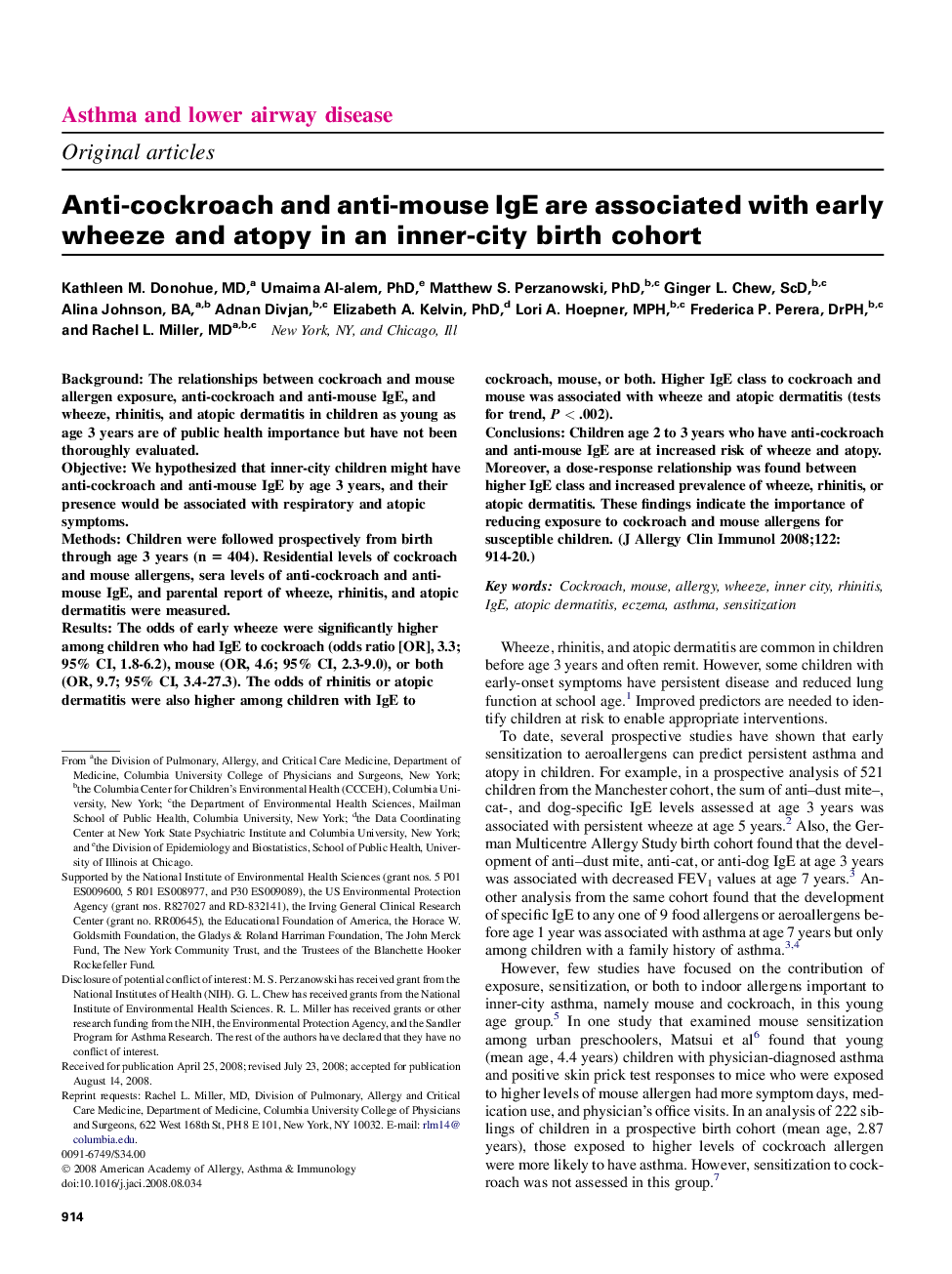| Article ID | Journal | Published Year | Pages | File Type |
|---|---|---|---|---|
| 3202088 | Journal of Allergy and Clinical Immunology | 2008 | 7 Pages |
BackgroundThe relationships between cockroach and mouse allergen exposure, anti-cockroach and anti-mouse IgE, and wheeze, rhinitis, and atopic dermatitis in children as young as age 3 years are of public health importance but have not been thoroughly evaluated.ObjectiveWe hypothesized that inner-city children might have anti-cockroach and anti-mouse IgE by age 3 years, and their presence would be associated with respiratory and atopic symptoms.MethodsChildren were followed prospectively from birth through age 3 years (n = 404). Residential levels of cockroach and mouse allergens, sera levels of anti-cockroach and anti-mouse IgE, and parental report of wheeze, rhinitis, and atopic dermatitis were measured.ResultsThe odds of early wheeze were significantly higher among children who had IgE to cockroach (odds ratio [OR], 3.3; 95% CI, 1.8-6.2), mouse (OR, 4.6; 95% CI, 2.3-9.0), or both (OR, 9.7; 95% CI, 3.4-27.3). The odds of rhinitis or atopic dermatitis were also higher among children with IgE to cockroach, mouse, or both. Higher IgE class to cockroach and mouse was associated with wheeze and atopic dermatitis (tests for trend, P < .002).ConclusionsChildren age 2 to 3 years who have anti-cockroach and anti-mouse IgE are at increased risk of wheeze and atopy. Moreover, a dose-response relationship was found between higher IgE class and increased prevalence of wheeze, rhinitis, or atopic dermatitis. These findings indicate the importance of reducing exposure to cockroach and mouse allergens for susceptible children.
